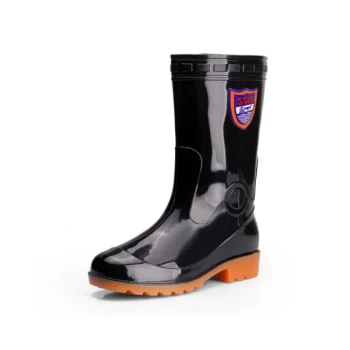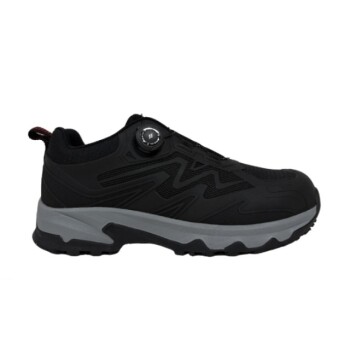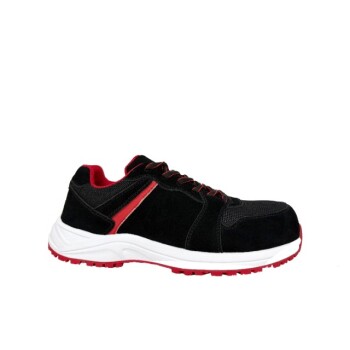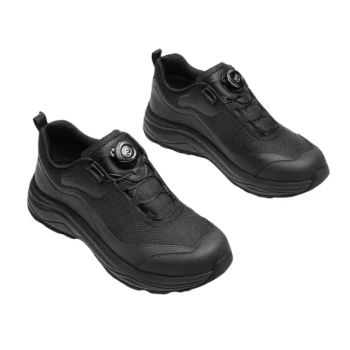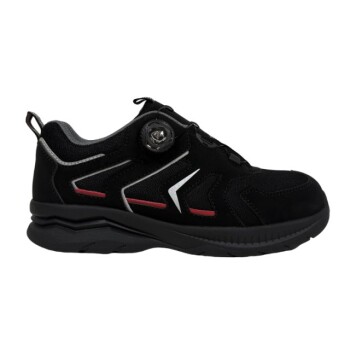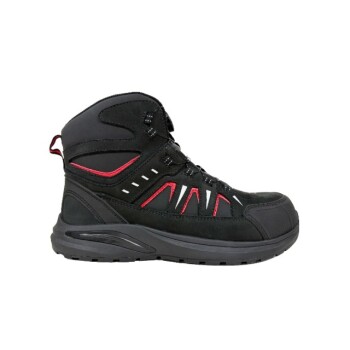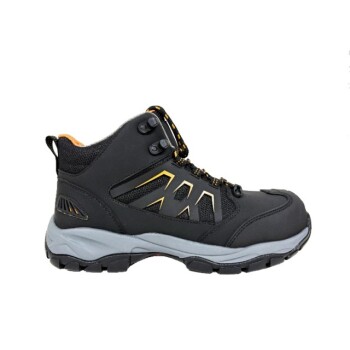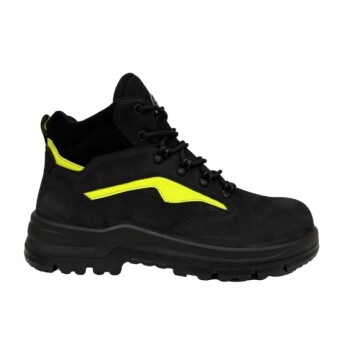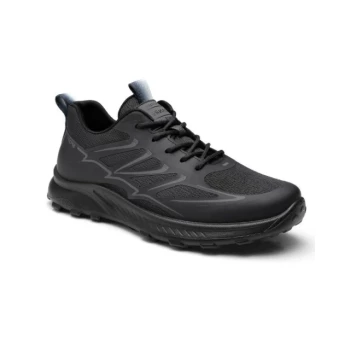At its core, cushioning in hiking shoes is about energy management. Its primary function is to absorb the shock generated with every step you take, increasing the duration of impact and thereby reducing the peak forces transmitted through your feet, ankles, knees, and back. This prevents cumulative stress and pain, especially over long distances on hard or uneven terrain.
Cushioning is a critical safety feature, not just a comfort preference. It works as part of an integrated system with support and rigidity to protect your body from both the repetitive impact of walking and the instability of the trail.
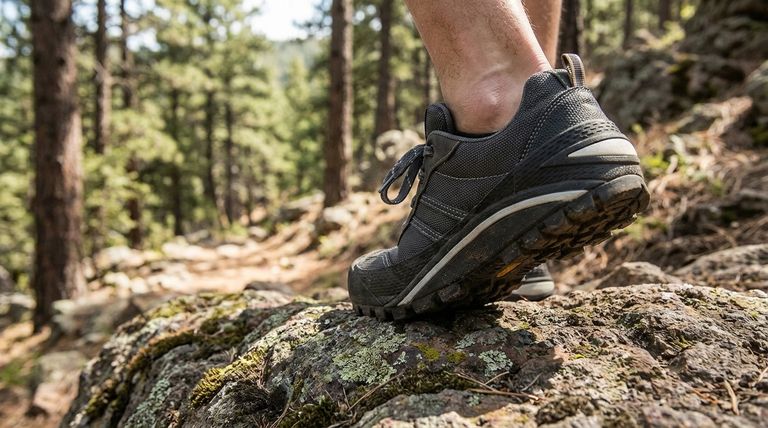
The Physics of Hiking: Why Impact Matters
Understanding the forces at play on the trail clarifies why cushioning is not optional. Every step you take creates a significant impact that your body must absorb.
The Force of Every Step
When you walk, the ground reaction force—the force exerted by the ground on your body—can reach 1.25 times your body weight. On a long hike with thousands of steps, this adds up to an enormous load on your joints.
This force increases significantly when moving downhill or running, sometimes reaching two to three times your body weight.
How Cushioning Works
Cushioning, typically made from materials like EVA (ethylene vinyl acetate) foam, works by deforming upon impact. This action slows down the collision between your foot and the ground, spreading the force over a longer period.
By extending the impact duration, the midsole dramatically reduces the peak force that travels up your skeletal system.
The Immediate Benefit: Reduced Joint Stress
The direct result of this shock absorption is less stress on your ankles, knees, hips, and lower back. This is the key to preventing the aches and pains that can cut a hike short or linger for days afterward.
Cushioning is Only One Piece of the Puzzle
Focusing solely on a shoe's softness is a common mistake. True performance and safety come from the interplay of cushioning with other essential structural features.
Support and Stability: The Counterbalance to Softness
While cushioning absorbs vertical impact, ankle support prevents lateral movement, like rolling an ankle. A mid- or high-cut boot that covers the ankle provides crucial stability on rugged ground.
A secure lacing system with support hooks and eyelets locks your foot in place, ensuring the shoe moves with you and preventing internal slippage that causes blisters.
Rigidity: Your Platform on Uneven Ground
A rigid sole prevents the shoe from bending excessively when you step on rocks or roots. This protects the bottom of your foot from sharp objects and reduces foot fatigue over many miles.
For high-altitude hikes or mountaineering, a very rigid sole is essential for both protection and providing a stable platform for gripping difficult terrain.
Grip and Traction: The Foundation of Safety
The outsole's grip is your connection to the trail. Pronounced notches, or lugs, are vital for digging into soft surfaces like mud, while stickier rubber compounds excel on wet rock.
Without reliable traction, the benefits of cushioning and support are irrelevant, as the primary goal is to prevent a fall in the first place.
Understanding the Trade-offs
Choosing the right hiking shoe involves balancing competing priorities. There is no single "best" shoe, only the best shoe for a specific purpose.
Cushioning vs. Trail Feel
Highly cushioned shoes can sometimes feel disconnected from the ground. While this is excellent for comfort on hard-packed trails, some hikers prefer less cushioning on technical terrain for a better "feel" of the surface underfoot.
The Durability Question
Cushioning materials break down over time. Softer foams like EVA provide excellent shock absorption but can compress and lose their effectiveness faster than denser compounds. This is a key trade-off between initial comfort and long-term performance.
Weight vs. Protection
More cushioning, support, and rigidity almost always result in a heavier shoe. While this adds protection, it also requires more energy to lift with every step, which can contribute to fatigue on a long day.
Making the Right Choice for Your Hike
Your decision should be guided by the type of terrain you frequent and the loads you carry.
- If your primary focus is day hikes on well-maintained trails: A lighter, more flexible shoe with moderate cushioning offers a great balance of comfort and agility.
- If your primary focus is multi-day backpacking with a heavy pack: Prioritize durable cushioning, robust ankle support, and a semi-rigid sole to manage the extra weight and protect your joints.
- If your primary focus is scrambling or hiking on highly technical, rocky terrain: A shoe with a rigid sole, sticky rubber for grip, and moderate cushioning will provide the necessary stability and protection.
Ultimately, selecting the right footwear is about choosing a protective system that matches your specific needs on the trail.
Summary Table:
| Cushioning Benefit | Key Function | Ideal For |
|---|---|---|
| Shock Absorption | Reduces peak impact forces on joints | Long-distance hiking, hard terrain |
| Joint Protection | Minimizes stress on ankles, knees, and back | Backpacking with heavy loads |
| Energy Management | Decreases fatigue by managing ground reaction forces | Multi-day treks |
| Trail Safety | Works with support and rigidity for stability | Uneven or technical terrain |
Ready to equip your customers with high-performance hiking footwear that prioritizes safety and comfort? As a large-scale manufacturer, 3515 produces a comprehensive range of durable, well-cushioned hiking and trekking shoes for distributors, brand owners, and bulk clients. Our expertise in integrating cushioning with support and grip ensures your customers get the protection they need on any trail. Contact us today to discuss your footwear needs and leverage our full production capabilities!
Visual Guide
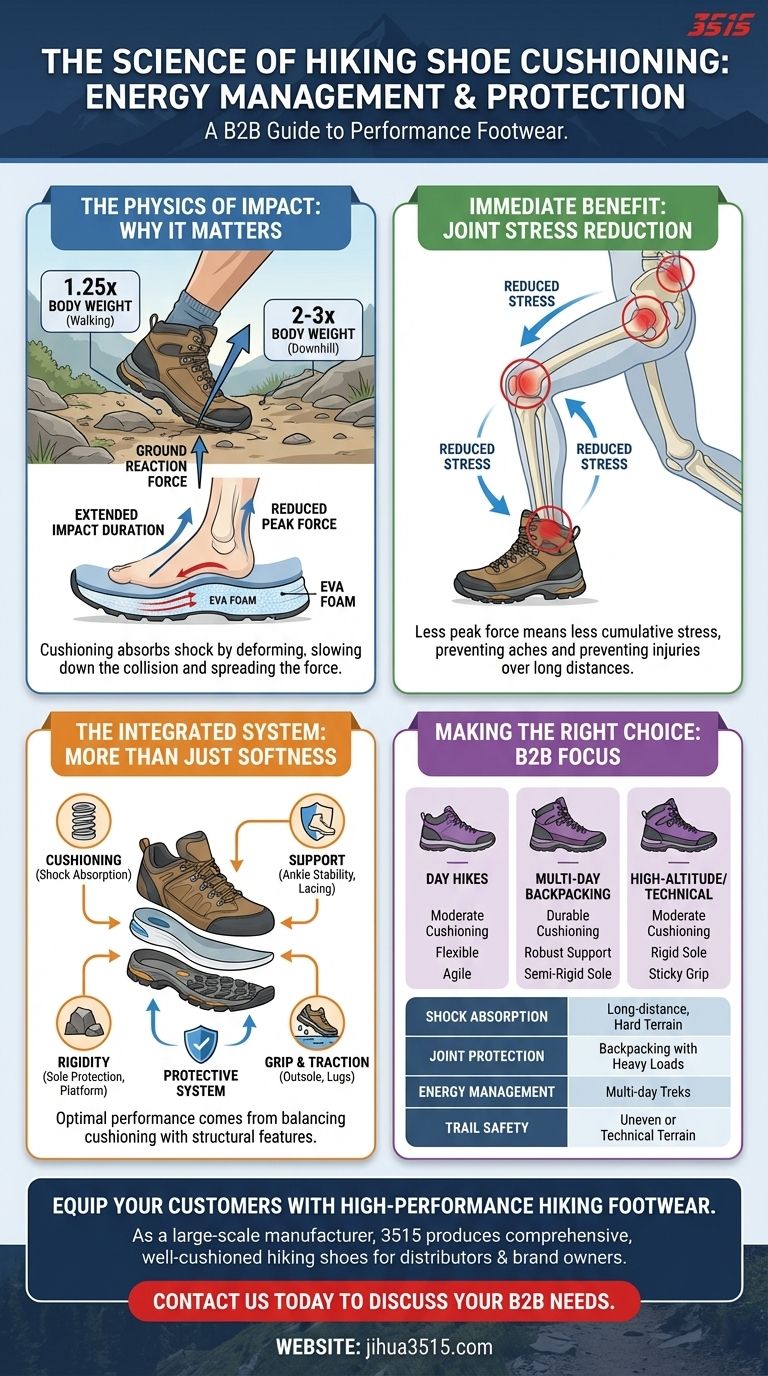
Related Products
- Durable Rubber Sole Outdoor Shoes Wholesale & Custom Manufacturing
- Safety Footwear Wholesale Manufacturer for Custom OEM/ODM Production
- Durable Waterproof Rain Boots | Custom Manufacturer for Wholesale & Brands
- Durable Rubber-Soled Utility Shoes for Wholesale & Custom Brand Manufacturing
- Wholesale Safety Footwear Manufacturer for Bulk & Custom OEM Orders
People Also Ask
- How does cushioning work in hiking shoes? The Science of Shock Absorption
- What are the characteristics of heavy-duty hiking boots? Ultimate Guide for Rugged Terrain
- What were traditional shoe soles made from before rubber? The History of Leather Soles
- Why are vulcanized soles popular in urban fashion? Discover the Legacy of Authentic Street Style
- What technical requirements are essential for outsoles in pivoting sports? Boost Grip and Lateral Stability


